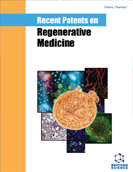Abstract
The mammalian heart has a limited capability of physiological cardiomyocyte turnover during adult life to substitute aged or damaged cells. While this regenerative mechanism has been preserved throughout mammalian evolution, it is insufficient to counteract more extensive tissue loss, which results in scar formation at the expense of cardiac function. In recent years, regenerative medicine studies investigated the efficiency of stem cells to regenerate the heart via celltherapy, while pre-conditioning the hostile environment of the injured cardiac tissue by administration of cell survival and anti-inflammatory molecules. Indeed, post-infarct combinatorial therapies using cells and factors (including growth factors, chemokines and cytokines) increased cardiac function recovery and tissue regeneration. In addition, the use of factors and molecules capable of inducing adult cardiomyocytes to re-enter cell cycle was explored to overcome the intrinsic cell cycle block or the loss of mitogenic stimuli in the postnatal heart. Nevertheless, the field has yet to solve significant obstacles including the incomplete differentiation of stem cells (with the associated danger of tumor formation) and the paucity of tissue-specific stem cells (specifically in adult/aged organs). In this review, we describe the advances in cardiac regenerative studies and the patented designs of new tools to heal an injured heart.
Keywords: Cardiac regeneration, cell therapy, growth factors, BONE MARROW STEM CELLS, c-KIT CARDIAC STEM CELLS, ISLET1 CARDIOVASCULAR PROGENITORS, PLURIPOTENT STEM CELLS, MAMMALIAN HEART, CARDIAC ENDOGENOUS Repair, GROWTH FACTOR THERAPY.
 29
29







